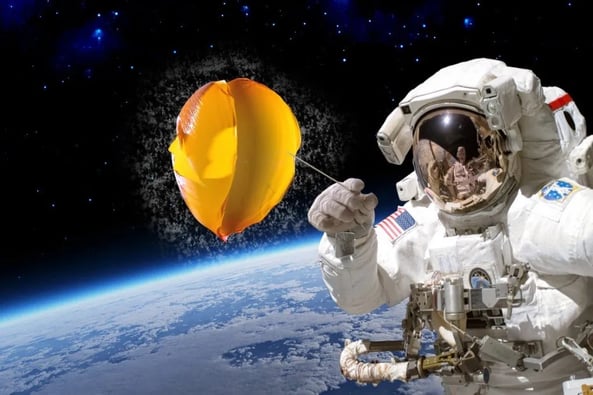How Visualization Helped Create Indiana's Fastest Growing Startup

The Internet is full of videos and articles about executives, like Steve Jobs and Marc Benioff, and athletes, like Drew Brees, Michael Phelps, and Jerry Rice, talking about the major impact visualization has had on their success.
The best way to understand the impact of visualization is to experience it for yourself, but a good story might be the next best thing.
This is a story about how a visualization helped three 25 year-olds, including myself, create the Inc. 500's 58th fastest growing company in the country for 2011.
But this story isn’t just for entrepreneurs. If you want to spur advancement in your career or hit a personal goal, keep reading.
- 8 Practical tips on how and when to practice visualization
- A real world application of visualization in business
- Why visualization can help you get through some of your toughest moments
- Some of the science backing up visualization's impact on performance
I had just quit my job working as a management consultant in Chicago.
I was feeling a little down, and I was struggling to figure out what I wanted to do next.
That's when two of my high school friends, Jeremy and Aaron, called and invited me over to hang out. We sat on my friend's back porch and shared some drinks and laughs.
We always loved sharing business ideas back then. Typically we’d float an idea up like a helium balloon, and then find a reason to pop it.

“Cheers! Another one bites the dust.”
But then my friend, Jeremy, started talking about how the Internet marketing strategies we used in high school to grow our hobby sites were lifting his dad’s business to new heights.
It was about 2007 and we realized we were well timed to catch a tsunami of an industry trend.
The next few hours passed in what felt like minutes.
We lifted this idea balloon out into Earth’s orbit and beyond. Each of us pushing it higher, and higher. The conversation cultivated so much raw energy.

We shared our dreams for this potential business and our hopes and desires for the future. And we forecasted bold assumptions about the industry.
When the conversation came to its natural conclusion, I felt energized and inspired. The discussion had totally changed my mood around.
I left Jeremy's house and sat down on the curb outside, feeling relaxed.

Next, I closed my eyes and drifted into a visualization that would change my life.
My mind started drifting and opening up to new possibilities. It took a little courage and vulnerability, but I let myself imagine what it might feel like to be CEO of a company with a parabolic growth curve.
I started imagining all of the stories we could create and tell our future children about. My mind kept running and overflowing with visuals.

At this point I started to lose myself in the visualization, like it was real life. I could feel the excitement running through my veins.

Then I did something I’d never heard of anyone doing before.
It certainly wasn't taught at the business school I had recently graduated from.
I cracked my laptop open and started writing a short story about the future of our potential business. I called it, “The Prologue,” and I thought of it as a kickoff to the business plan I was preparing to write.
I apologize to any professional graphic designers for the cover art... :)

The Prologue took the assumptions we made about the future of the industry and codified them into a story about how they’d impact our company, causing us to grow exponentially and lead our marketplace.
Next was the fun part.
To my surprise, many elements of that summer evening's visualizations came true.
The company grew as fast as the exponential growth visualized. In a little over 5 years, our bootstrapped company was making over $11 million annually and served over a dozen Fortune 500 companies.
In 2011 we were the Inc. 500's 58th fastest growing company in the country (and the fastest in the state of Indiana) with a 3,597% 3 year compound annual growth rate. The energy and vibe was so high around the office that new hires would remark on it.
We had the privilege of hiring some of the most talented people I've ever worked with. I mean, they're the ones who made all of the above happen.
So what did the visualization actually do?
Firstly, it got me excited enough to stay motivated for years. I can't overemphasize the importance of this. To do anything remarkable, it requires incredible motivation, and a powerful visualization can really help with that.
During my work days building the company, my mind would often reflect on what I wrote in The Prologue. And during my hardest moments, it’d give me inspiration and make me smile.
I had an internal motivation to make what I wrote come true. In fact, my visualization was one of the primary forces that made my unconscious mind believe my lofty goals were even possible. People are full of limiting beliefs that hold them back, like a fear of failure or success.

The Prologue was etched in my memory like stone.
It is strong emotion that helps create lasting memories. This is why you can remember so many song lyrics from your youth without ever having tried to.
But can you quote any lines from the college textbooks you poured over? Probably not, unless you happen to get all hot and bothered by studying Calc 2 theorems (not judging if you do).
My memories of The Prologue were odd though because they almost felt like “memories of the future.” The unconscious mind operates in something called quantum time, that’s independent from the past and future, and it does not know the difference between what is real and what is imagined.
So when we’d hit a milestone in The Prologue, I almost felt like I’d already experienced it. Kind of like a strange form of deja vu.

At ExactTarget’s acquisition conference I realized that visualization has been at the root of some of the most successful tech companies.
At about the same time my company hit its peak growth, I was invited to see Marc Benioff and Scott Dorsey talk about Salesforce’s acquisition of ExactTarget.
Marc sat on stage and started talking about how Steve Jobs was his mentor. I leaned forward in my seat as he explained that Steve helped him visualize what would later become Salesforce. “Be mindful and project the future,” Jobs once told Benioff. Marc now meditates and visualizes daily.

At this point I started to visualize a new future for myself, optimizing these techniques and sharing them with others.
I now do guided visualizations based upon the same techniques mindset coaches have used for decades with professional athletes, like Tiger Woods, Michael Phelps, and Drew Brees. These are often done before big games or seasons, but they're just as effective in business before a big quarter or key sales call.
Here’s Conor Kinsela, Director of Sales Development for Greenlight Guru, talking about how we used visualization to create more success for his Sales Development Representative (SDR) team during the Covid pandemic.
My next post will unpack more of the science backing up visualization, like when a group of people were able to gain considerable strength using visualization without touching a weight (Ranganathana, Siemionow, Liu, Sahga, Yue 2004).
I’ll also share some of the advanced visualization techniques that I use today. If you’d like first access to this post and other cutting-edge mindset techniques for high performers, be sure to scroll below and subscribe to Dreamfuel's weekly content.
Until next time, consider give visualization shot. There's no better time than now to imagine some positive changes in your life. It certainly won't hurt anything.
Related articles:
-

-

How to hack your "I give up" reflex
Have you ever quit pursuing a goal that you really cared about?Read more -

Neuroscience tips to master persuasion & pitching
Over the past few years, I’ve been immersed in the process of getting my...Read more



